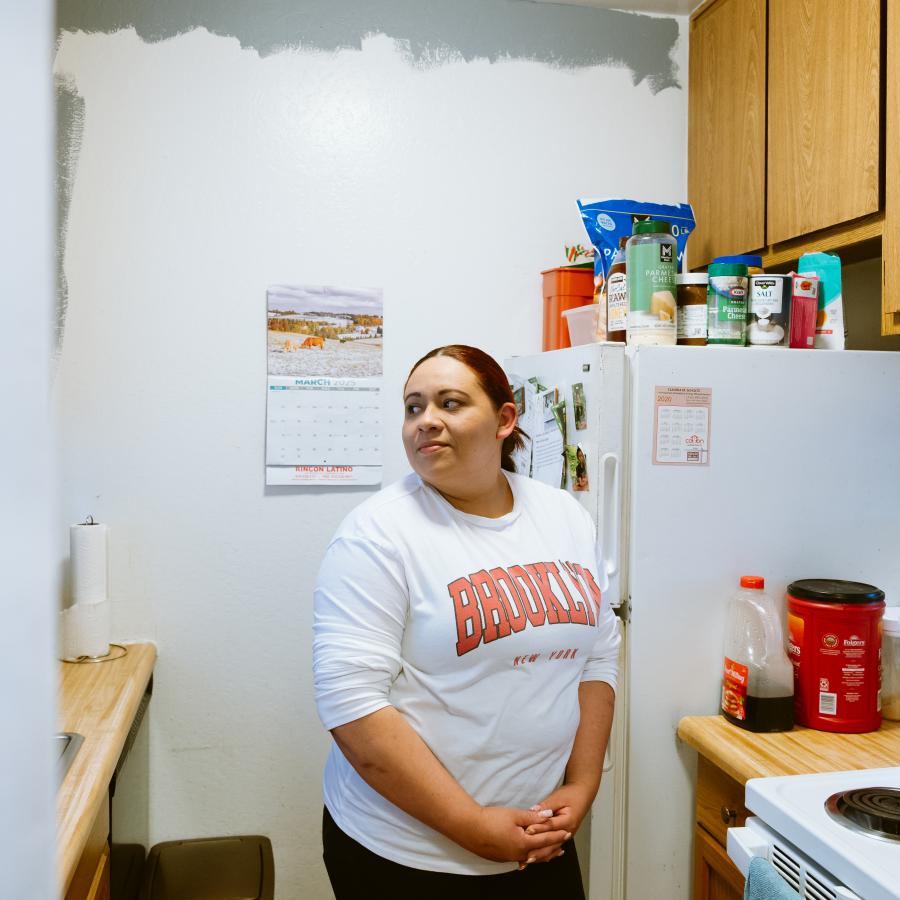Basic family needs
- The percentage of workers in the nine-county Bay Area earning enough to meet their basic needs decreased from 74 percent in 2014 to 62 percent in 2020.
- In the nine-county Bay Area, 35 percent of Latinx workers earn enough to meet their basic needs — the lowest share of all racial and ethnic groups.
- The ability to cover basic family needs also varies by gender: 31 percent of Latinx women and 32 percent of Pacific Islander women who work earn enough to meet basic needs, compared to 78 percent of white men who work.
- San Mateo County has the highest share of residents living in low-resource neighborhoods.
Regional income inequality has worsened over the past 40 years, with widening gaps between the lowest and highest incomes since 1980. While the Bay Area has become home to a growing number of high-wage jobs in tech, engineering, and finance, workers in low-wage service sectors have faced increasingly difficult challenges to sustain themselves and their families. The region-wide housing crisis has led to rapid increases in rent in recent decades, leading many more residents to suffer from housing burden. Having a for-profit healthcare system also means that families can bear enormous costs for the well-being of their children, and pre-K and college tuition costs make education an expensive affair for many families. Altogether, inequitable employment opportunities and the high costs of living make affording basic family needs a daunting task for many Bay Area households.
Invest in people: Strategies to ensure economic security for all
-
Raise the floor on low-wage work by increasing the federal minimum wage (ideally to at least $15 per hour) or by enacting living-wage laws, requiring paid sick leave and family leave, ending wage theft, strengthening workers' rights to organize, and ensuring fair scheduling.
-
Grow good middle-skill jobs in infrastructure, manufacturing, energy, and other sectors.
-
Expand access to high-quality public education, create cradle-to-career pipelines for vulnerable youth, increase access to affordable childcare, and invest in universal pre-K.
-
Make permanent the temporary expansion of the Child Tax Credit, which was part of Covid-19 federal stimulus spending.
-
Implement strong tenant protections like just cause eviction ordinances, legal assistance, Tenant Opportunity to Purchase policies (TOPA), Community Opportunity to Purchase policies (COPA), and rent control.
-
Increase transportation access to help jobseekers and low-wage workers connect to good jobs.
-
Dismantle barriers to employment, such as conviction history questions on job applications, employer credit checks, and racial discrimination in hiring.
- Target economic development and workforce efforts to grow high-opportunity sectors that provide pathways for people without four-year degrees or those facing other barriers to employment.
Sonoma County Pilots a Guaranteed Basic Income Program

Sonoma County pilots a guaranteed basic income program. In 2023, First 5 Sonoma County launched a guaranteed basic income pilot to support low-income families with young children financially recover from the Covid-19 pandemic. Funded by American Rescue Plan Act (ARPA) funds from Sonoma County and the Cities of Healdsburg, Petaluma, and Santa Rosa, as well as contributions from Corazón Healdsburg, the pilot program provides 305 local families with a monthly payment of $500 for two years. While there are no limits or requirements attached to the payments, eligible families had to earn a household income below 185% of the federal poverty level, have a pregnancy or at least one child under the age of six, and have been negatively impacted by the Covid-19 pandemic. Nearly 6,500 families applied for the 305 slots, indicating the widespread need for financial assistance among families with young children. Learn more.
Photo: Luis Quintero
Thursday, February 22, 2024 to Thursday, February 22, 2024Nerys Ramirez's Story
 An eight-hour job isn't enough because you have to pay rent, you have to pay bills, you have to buy the most essential things, and we can't buy some other things... I mean, it's harder.Nerys Ramirez, Concord, Contra Costa
An eight-hour job isn't enough because you have to pay rent, you have to pay bills, you have to buy the most essential things, and we can't buy some other things... I mean, it's harder.Nerys Ramirez, Concord, Contra Costa Nerys Ramirez is a single mother of a teenage son and young daughter. Like 70 percent of Latina-headed households in Concord, her income isn’t enough to cover the cost of their families' basic needs. To make ends meet, Nerys previously worked two jobs, taking time away from her family. Last year, she and her family participated in a guaranteed income pilot program, which she learned about through her younger daughter’s school. The additional monthly funds made it possible for Nerys to quit her second job, giving her more time with her kids and to take English language classes. Learn more.
Photo: Felix Uribe
Friday, September 19, 2025 to Friday, September 19, 2025-
Reports: New Cost of Living Numbers Show How Much Families Need to Make It in the Bay Area; Has the Cost of Living in the Bay Area Always Been This High?; One in Four Bay Area Families Isn’t Making Enough to Live Here, New Study Says; Solving the Housing Crisis Is Key to Inclusive Prosperity in the Bay Area
-
Data: Family Needs Calculator (Insight Center); Self Sufficiency Standard; Family Budget Calculator
Median earnings


